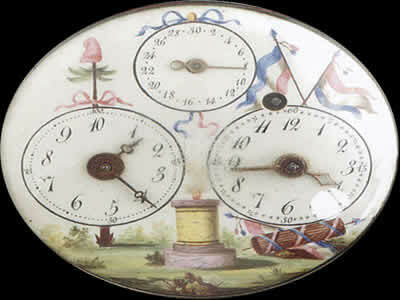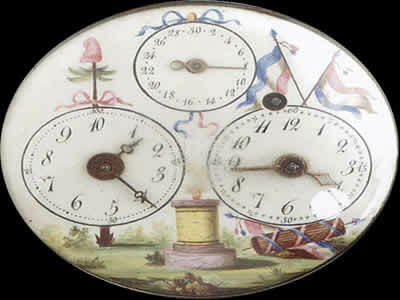Calendars are used to mark the passage of time, resulting from knowledge developed about astronomy. Most of the time, they are used for thousands of years, representing cultural heritages that remain over time.
Now, imagine overnight the names of days, months and weeks change? This is what happened during the period of the National Convention, when French revolutionaries created the Calendar of the French Revolution, officially adopted in 1793.
The main objective of creating a new calendar was to break with the cultural heritages of the Old Regime and the Catholic Church. The calendar in effect at the time in France was the same one we use today, the Gregorian calendar. O Gregorian calendar it was an update of the Julian calendar, made by Pope Gregory XIII in 1545. Sundays, as they are days set aside for Catholic religious practices, and Church holidays should be abolished. As well as the months of the year should be changed, intending a universal use of the new calendar.
The task of creating the new calendar was entrusted to mathematician Gilbert Romme. The new calendar was also a solar calendar, divided into 12 months. The amendment presented by Romme was to put every month with 30 days, with three weeks of 10 days each. The weeks were named after decamers or decades. The days were given different names, from animals, plants and minerals and were not repeated in the same year.
The five days left over within the 12 months would be turned into national holidays at the end of the year. would be the holidays of sans-culottes, in honor of members of the French popular classes. In leap years, used to adapt calendar time counting to celestial movements, another holiday day would be celebrated.
The French revolutionaries also intended to alter the count of time during the days. There would no longer be 24 hours. The day would be divided into 10 hours. Each hour would have a hundred more units, and each of these units would be further subdivided into another hundred parts. An hour of the day on the revolutionary calendar would represent 2 hours and 24 minutes of our day. What a mess for watchmakers! Due to the difficulty caused by changing the counting of the hours of the day, this part of the proposal was abandoned in 1795.

Republican watch. Due to the difficulty of using the new division of hours, it was quickly abandoned.**
Year I of the French Revolutionary Calendar began on September 22, 1792, the day of the establishment of the Republic and the day of the autumnal equinox in the Northern Hemisphere. But it was only officially adopted in 1793.
The most striking feature of the French revolutionary calendar was the names adopted for each of the months. This task was entrusted to the poet Fabre d'Églantine, who named the months according to the agricultural and nature cycles, characteristic of France. The revolutionary calendar looked like this:
Autumn
Harvest (vendémiaire, referring to the grape harvest): 22 September to 21 October;
Brumaire (brumaire, referring to the mists, to the fogs): 22 October to 20 November;
Cold Room (frimaire, referring to frosts): November 21st to December 20th.
Winter
Nivorous (nivose, referring to snow): December 21st to January 19th;
Rainy (rainfall, referring to the rains): January 20th to February 18th;
Windy (windstorm, referring to the winds): February 19th to March 20th.
Spring
Germinal (germinal, referring to germination): March 21 to April 19;
Floral (floral, referring to flowers): 20 April to 19 May;
Prairial (beach, referring to meadows): 20 May to 18 June.
Summer
Messidor (messidor, referring to crops): June 19 to July 18;
Thermidor (thermidor, referring to heat): 19 July to 17 August;
Fruitful (fruitful, referring to the fruit, to fruiting.): August 18th to September 20th.
The days of the sans-culottes would be between September 17th and September 21st.
It is possible to see in the names the climatic and agricultural characteristics of the calendar.
The calendar was used in France until 1806, when Emperor Napoleon Bonaparte decreed the return of the use of the Gregorian calendar. This measure represented, in a way, Napoleon's break with republican ideals, since in addition to not using the calendar created in 1793, he established a new empire. The revolutionary calendar would be used one last time, in 1871, for a few weeks, during the events of the Paris Commune.
* Image Credit: The Horological Foundation
By Tales Pinto
Graduated in History

